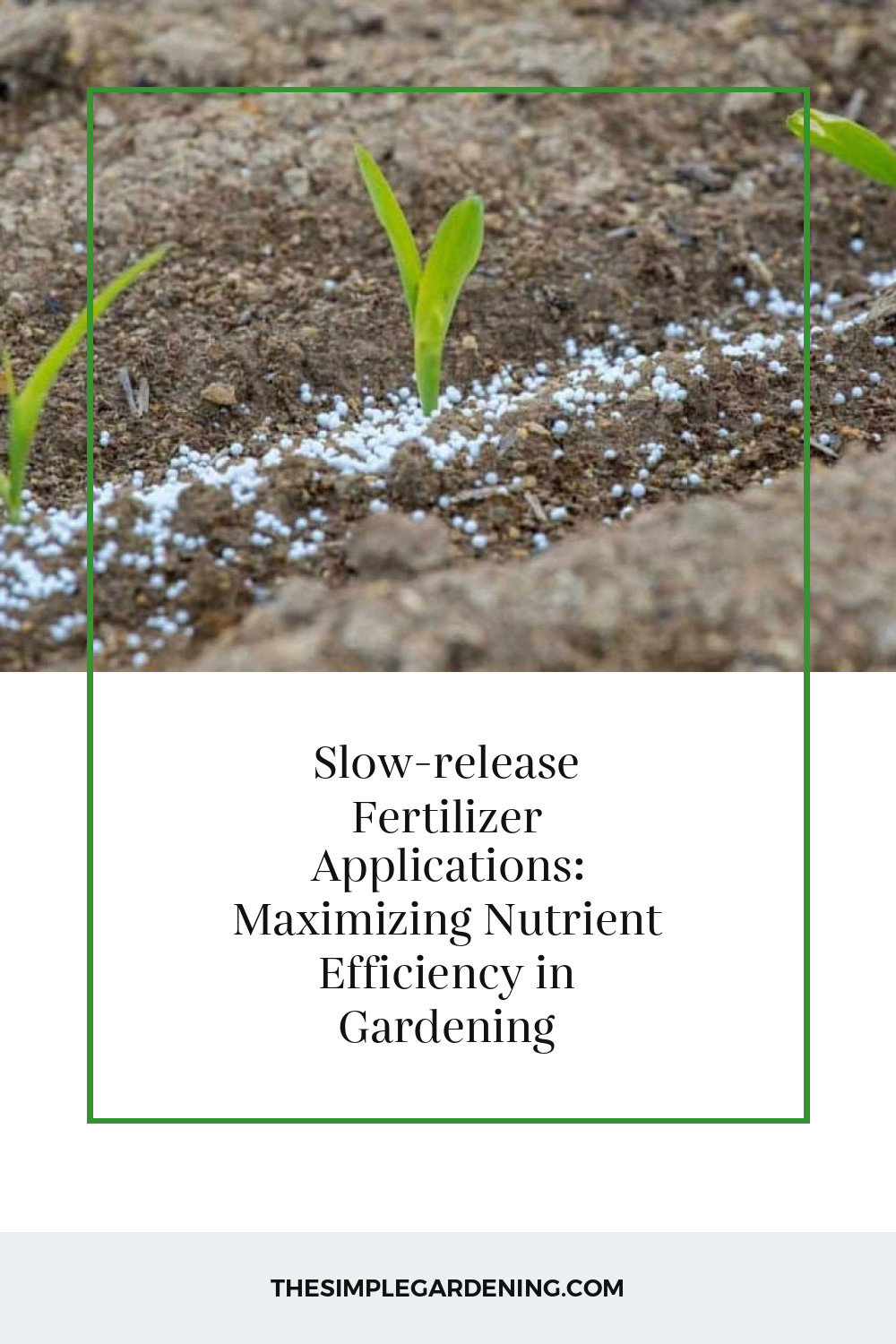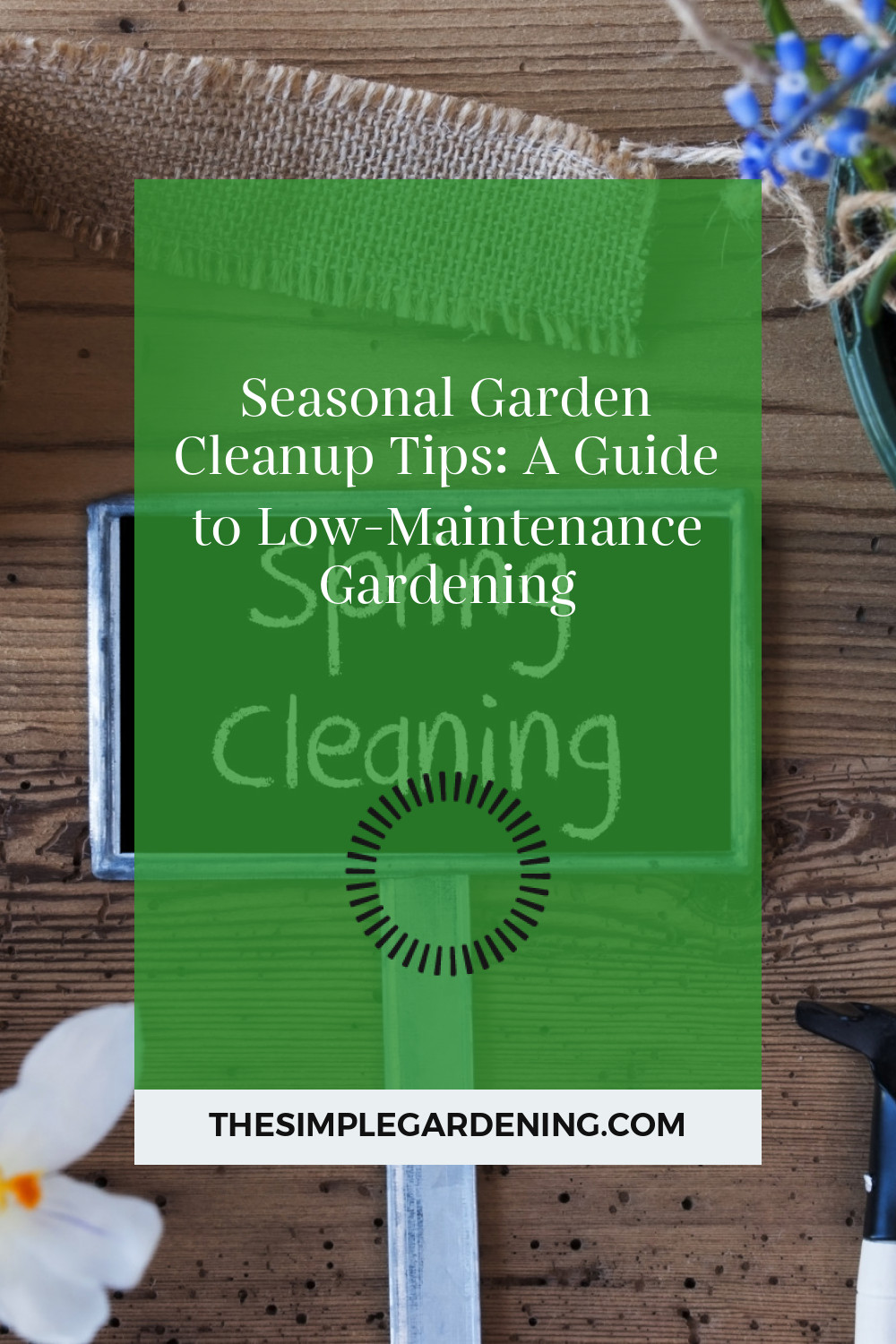In the realm of gardening, achieving lush, vibrant plants while minimizing labor-intensive tasks is a universal desire. Slow-release fertilizers offer a promising solution, providing sustained nourishment to plants over extended periods. Let’s delve into the intricacies of slow-release fertilizer applications, exploring their benefits, selection criteria, application methods, and more.
1. Introduction to Slow-Release Fertilizers
Slow-release fertilizers represent a cornerstone in modern gardening practices, offering a gradual supply of essential nutrients to plants. Unlike conventional fertilizers that deliver an immediate nutrient surge, slow-release variants ensure a steady stream of nourishment, promoting sustained growth and vigor. Understanding their mechanisms and benefits is pivotal in harnessing their potential for low-maintenance gardening success.
Table 1: Slow-release Fertilizers Comparison
| Type | Release Mechanism | Nutrient Content | Longevity |
|---|---|---|---|
| Organic | Decomposition | Variable | Moderate to Long-term |
| Synthetic | Chemical Reaction | High | Variable |
| Polymer-coated | Controlled Release | High | Long-term |
1.1 Understanding Slow-release Fertilizers
Slow-release fertilizers encompass a diverse array of formulations, each with unique release mechanisms and nutrient profiles. Organic variants rely on microbial decomposition processes, gradually breaking down organic matter to release nutrients. Synthetic fertilizers, on the other hand, undergo chemical reactions to gradually release nutrients into the soil. Polymer-coated fertilizers feature controlled-release technologies, ensuring a steady nutrient supply over an extended period.
1.2 Benefits of Using Slow-release Fertilizers in Low-Maintenance Gardening
Embracing slow-release fertilizers in low-maintenance gardening offers an array of compelling advantages. Firstly, their gradual nutrient release aligns with plant uptake patterns, minimizing the risk of nutrient leaching and wastage. Moreover, their longevity reduces the frequency of fertilizer applications, translating to time and labor savings for gardeners. Additionally, slow-release formulations promote balanced growth, mitigating the risk of fertilizer burn and nutrient imbalances.
1.3 Overview of How Slow-release Fertilizers Work
Slow-release fertilizers operate on the principle of controlled nutrient release, ensuring a consistent supply to plants over an extended period. This sustained nourishment stems from various mechanisms, including microbial decomposition, chemical reactions, or polymer encapsulation. By modulating the rate of nutrient release, these fertilizers foster optimal nutrient uptake by plants, promoting robust growth and resilience.

Source Image: plantcaretoday.com
Selecting the Right Slow-Release Fertilizer
Navigating the diverse landscape of slow-release fertilizers demands a nuanced understanding of their characteristics and suitability for specific gardening contexts. From organic formulations to polymer-coated varieties, selecting the right fertilizer hinges on factors such as nutrient content, release rate, and compatibility with plant and soil requirements.
2. Selecting the Right Slow-Release Fertilizer
Effective utilization of slow-release fertilizers hinges on selecting the most suitable variant tailored to the unique needs of your garden ecosystem. Let’s explore the key considerations and diverse options available to empower gardeners in making informed fertilizer choices.
Table 2: Factors to Consider When Choosing Slow-release Fertilizers
| Factor | Consideration |
|---|---|
| Nutrient Content | Balanced formulation catering to plant needs |
| Release Rate | Matching nutrient release with plant uptake |
| Longevity | Duration of nutrient supply |
2.1 Types of Slow-release Fertilizers
Slow-release fertilizers encompass a spectrum of formulations, each offering distinct advantages and considerations. Organic fertilizers, derived from natural sources such as compost or animal manure, provide a rich array of nutrients and foster soil health. Synthetic fertilizers, synthesized through chemical processes, offer precise nutrient ratios and rapid availability. Polymer-coated fertilizers feature encapsulated nutrients, delivering controlled release and extended longevity.
2.2 Factors to Consider When Choosing a Slow-release Fertilizer
Navigating the myriad options of slow-release fertilizers necessitates a strategic approach informed by specific gardening requirements. Key factors to evaluate include nutrient content, release rate, and longevity. Optimal nutrient content ensures comprehensive plant nourishment, while matching the release rate to plant uptake patterns prevents nutrient wastage. Furthermore, assessing the longevity of fertilizer formulations aligns with long-term gardening objectives, minimizing the need for frequent reapplication.
2.3 Matching Fertilizer to Specific Plant Needs and Soil Conditions
Customizing fertilizer selection to match the unique requirements of plant species and soil conditions is paramount for achieving optimal growth outcomes. Different plants exhibit varying nutrient preferences and growth patterns, necessitating tailored fertilizer formulations. Moreover, soil characteristics such as pH levels, texture, and organic matter content influence nutrient availability and uptake, further underscoring the importance of targeted fertilizer selection.

Source Image: www.wikihow.com
Application Methods for Slow-Release Fertilizers
Effective application of slow-release fertilizers constitutes a fundamental aspect of their utilization in low-maintenance gardening practices. From soil incorporation to targeted top-dressing, adopting appropriate application methods ensures optimal nutrient distribution and uptake by plants.
3. Application Methods for Slow-Release Fertilizers
Implementing strategic application techniques is essential for maximizing the efficacy of slow-release fertilizers and fostering robust plant growth. Let’s explore various methods, from soil incorporation to top-dressing, to empower gardeners in achieving optimal nutrient distribution and utilization.
Table 3: Application Methods for Slow-release Fertilizers
| Method | Description |
|---|---|
| Soil Incorporation | Mixing fertilizer into soil prior to planting |
| Top-dressing | Applying fertilizer on the soil surface around plants |
| Fertilizer Spikes | Inserting pre-measured fertilizer spikes into soil |
| Pellets/Pelletizers | Broadcasting slow-release fertilizer pellets |
3.1 Incorporating Slow-release Fertilizers into Soil Before Planting
Pre-planting soil incorporation of slow-release fertilizers lays the groundwork for sustained plant nutrition throughout the growing season. By thoroughly mixing fertilizers into the soil profile, gardeners ensure uniform distribution of nutrients, promoting healthy root development and vigorous growth. This method is particularly effective for establishing nutrient-rich growing environments conducive to optimal plant performance.
3.2 Top-dressing Existing Plants with Slow-release Fertilizers
Top-dressing represents a convenient and efficient method for replenishing soil nutrients and sustaining plant growth in established garden beds. By evenly spreading slow-release fertilizers around the base of plants, gardeners provide a localized nutrient boost while minimizing disturbance to root systems. Regular top-dressing applications throughout the growing season maintain nutrient levels, fortifying plants against stress and promoting lush foliage and blooms.
3.3 Using Slow-release Fertilizer Spikes or Pellets for Targeted Application
Fertilizer spikes and pellets offer precise and targeted nutrient delivery, ideal for addressing specific plant requirements or optimizing nutrient distribution in container gardens. These pre-measured formulations simplify application, ensuring accurate dosing without the risk of over-fertilization. Whether inserted directly into the soil or incorporated into potting mixtures, spikes and pellets provide a convenient solution for enhancing plant health and vitality.
3.4 Timing and Frequency of Fertilizer Application
Strategic timing and frequency of fertilizer application play a pivotal role in maximizing nutrient uptake efficiency and promoting healthy plant growth. By aligning fertilizer application with plant growth stages and seasonal nutrient demands, gardeners can optimize nutrient utilization and minimize the risk of over-fertilization. Let’s explore the nuances of timing and frequency to ensure precise and effective fertilizer management in low-maintenance gardening.

Source Image: www.lovemylawn.net
4. Timing and Frequency of Fertilizer Application
Timing and frequency of fertilizer application represent critical factors influencing nutrient availability and uptake by plants. By synchronizing fertilizer treatments with plant growth stages and seasonal nutrient demands, gardeners can optimize nutrient utilization while minimizing environmental impact and resource wastage.
Table 4: Guidelines for Timing and Frequency of Fertilizer Application
| Plant Growth Stage | Optimal Timing | Frequency of Application |
|---|---|---|
| Establishment | Pre-planting or early growth stages | Once at planting, then as needed |
| Vegetative Growth | Early to mid-growing season | Every 4-6 weeks during active growth |
| Flowering/Fruiting | Prior to flowering/fruiting onset | Once monthly during flowering/fruiting |
| Dormancy/Resting | Late fall or early winter | Once before dormancy, if applicable |
4.1 Determining the Optimal Timing for Applying Slow-release Fertilizers
Aligning fertilizer application timing with specific plant growth stages is essential for maximizing nutrient uptake efficiency and promoting healthy growth. During the establishment phase, incorporating slow-release fertilizers into the soil before planting provides a nutrient reservoir for emerging seedlings, fostering robust root development and early vigor. For established plants, timing fertilizer application to coincide with vegetative growth stages ensures ample nutrient availability to fuel foliage expansion and structural development.
4.2 Guidelines for Frequency of Application Based on Plant Type and Growth Stage
Adhering to a structured fertilization schedule based on plant type and growth stage is pivotal for maintaining optimal nutrient levels without risking over-fertilization. During periods of active growth, such as the vegetative stage or flowering/fruiting phase, frequent applications every 4-6 weeks sustain nutrient supply and support vigorous development. Conversely, during dormancy or resting periods, reducing fertilizer frequency minimizes nutrient uptake and aligns with the plant’s reduced metabolic activity.
4.3 Avoiding Over-fertilization and Nutrient Imbalances
Vigilance in fertilizer application is crucial to prevent the adverse effects of over-fertilization, which can lead to nutrient imbalances, environmental pollution, and diminished plant health. By adhering to recommended application rates and timing, gardeners mitigate the risk of nutrient excess, ensuring plants receive adequate nourishment without compromising soil and water quality. Regular monitoring of plant health and soil fertility status enables proactive adjustments to fertilizer regimes, maintaining equilibrium in the garden ecosystem.

Source Image: hortzone.com
Slow-Release Fertilizer Applications
Soil Preparation and Amendment
Optimal soil health forms the foundation of successful gardening endeavors, providing a nutrient-rich substrate for plant growth and vitality. Soil preparation and amendment practices, including soil testing, organic matter incorporation, and pH adjustment, lay the groundwork for maximizing the efficacy of slow-release fertilizers and fostering thriving plant communities.
5. Soil Preparation and Amendment
Achieving optimal soil fertility and structure is paramount for fostering robust plant growth and maximizing the efficacy of slow-release fertilizers. Let’s explore essential soil preparation and amendment practices, from assessing soil quality to incorporating organic matter and optimizing pH levels, to create an ideal growing environment for low-maintenance gardening success.
Table 5: Soil Preparation and Amendment Techniques
| Technique | Description |
|---|---|
| Soil Testing | Assessing nutrient levels and pH |
| Organic Matter Addition | Incorporating compost, manure, or mulch |
| pH Adjustment | Balancing soil pH for optimal nutrient uptake |
5.1 Assessing Soil Quality and Nutrient Levels Before Applying Slow-release Fertilizers
Prior to fertilization, conducting comprehensive soil tests is imperative to evaluate nutrient levels, pH, and overall soil health. Soil testing provides valuable insights into existing nutrient deficiencies or imbalances, guiding targeted fertilizer selection and application. By addressing soil deficiencies proactively, gardeners optimize nutrient availability and uptake, laying the groundwork for healthy plant growth and vitality.
5.2 Incorporating Organic Matter and Compost to Improve Soil Structure and Fertility
Enriching soil fertility and structure through the addition of organic matter and compost is a cornerstone practice in sustainable gardening. Organic amendments, such as compost, manure, or mulch, replenish soil nutrients, enhance microbial activity, and improve water retention capacity. By integrating organic matter into the soil profile, gardeners foster a nutrient-rich environment conducive to robust root development, improved nutrient cycling, and enhanced plant resilience against environmental stressors.
5.3 Balancing Soil pH for Optimal Nutrient Uptake
Maintaining appropriate soil pH levels is essential for facilitating optimal nutrient uptake and utilization by plants. Soil pH influences the availability of essential nutrients, with most plants thriving in slightly acidic to neutral pH ranges. Adjusting soil pH through the application of lime or sulfur ensures that nutrients remain soluble and accessible to plant roots, maximizing nutrient uptake efficiency and minimizing the risk of nutrient deficiencies or toxicities.
In the next sections, we will delve deeper into the nuances of nutrient management, watering practices, and mulching techniques, offering actionable insights for cultivating thriving gardens with minimal maintenance requirements.
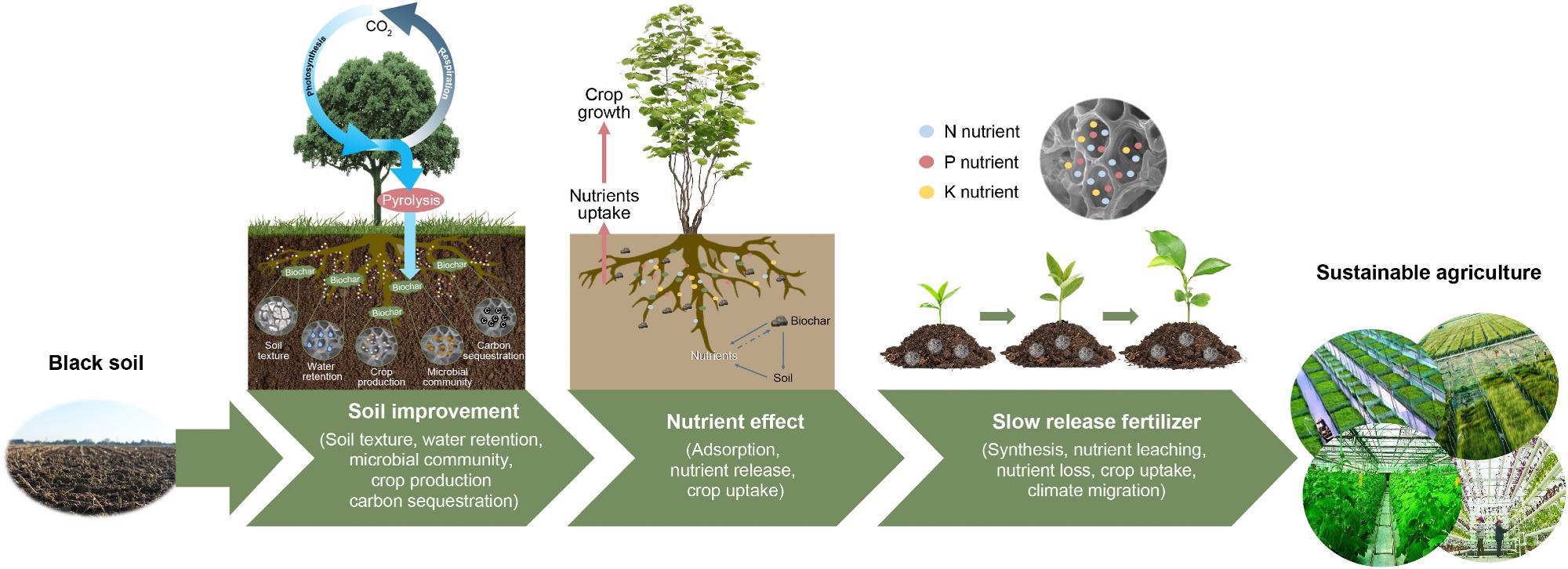
Source Image: www.azom.com
Nutrient Management in Low-Maintenance Gardening
Optimizing nutrient availability and uptake is paramount for sustaining healthy plant growth and vitality in low-maintenance gardening settings. By understanding the unique nutrient requirements of different plant species, conducting soil tests, and implementing targeted fertilization strategies, gardeners can nurture thriving plant communities while minimizing labor-intensive tasks.
6. Nutrient Management in Low-Maintenance Gardening
Balanced nutrition forms the cornerstone of vibrant plant growth in low-maintenance gardens. Effective nutrient management entails a nuanced understanding of plant nutrient requirements, soil fertility dynamics, and strategic fertilization practices. Let’s explore the essential components of nutrient management, from deciphering plant nutrient needs to adjusting fertilizer formulations based on soil test results.
Table 6: Nutrient Management Strategies
| Strategy | Description |
|---|---|
| Plant Nutrient Needs | Understanding the nutrient requirements of plants |
| Soil Testing | Assessing soil nutrient levels and pH |
| Fertilizer Formulation | Customizing fertilizer blends based on plant needs |
6.1 Understanding the Nutrient Needs of Different Plant Species
Tailoring nutrient management strategies to meet the specific requirements of different plant species is essential for promoting optimal growth and productivity. Each plant species exhibits unique nutrient preferences and uptake patterns, necessitating targeted fertilization approaches. By familiarizing themselves with the nutritional demands of individual plants, gardeners can ensure precise nutrient delivery, fostering robust foliage, blooms, and fruit development.
6.2 Adjusting Fertilizer Formulations Based on Soil Test Results
Soil testing serves as a foundational step in informed nutrient management, providing valuable insights into soil nutrient levels, pH, and composition. By analyzing soil test results, gardeners can identify nutrient deficiencies or imbalances, guiding the formulation of customized fertilizer blends. Targeted adjustments to nutrient ratios and application rates ensure that plants receive adequate nourishment, optimizing growth and resilience while minimizing environmental impact.
6.3 Monitoring Plant Health and Adjusting Fertilizer Applications as Needed
Regular monitoring of plant health indicators, such as leaf color, growth rate, and overall vigor, enables gardeners to assess the efficacy of fertilizer applications and make timely adjustments. Signs of nutrient deficiencies or excesses serve as valuable cues for fine-tuning fertilization regimes to meet evolving plant requirements. By adopting a proactive approach to nutrient management, gardeners can safeguard plant health, enhance yield potential, and cultivate thriving gardens with minimal intervention.

Source Image: www.pinterest.com
Watering Practices and Fertilizer Efficiency
Optimizing water management practices is integral to maximizing the efficacy of slow-release fertilizers and promoting efficient nutrient uptake by plants. By implementing water-conserving techniques, such as drip irrigation and mulching, gardeners can minimize nutrient leaching and enhance fertilizer efficiency, contributing to sustainable gardening practices.
7. Watering Practices and Fertilizer Efficiency
Water availability plays a crucial role in nutrient transport and uptake within plant roots, influencing the efficiency of slow-release fertilizers in delivering essential nutrients. By adopting water-wise irrigation techniques and promoting soil moisture retention through mulching, gardeners can optimize fertilizer utilization, minimize nutrient loss, and foster healthy plant growth in low-maintenance gardens.
Table 7: Watering Practices for Fertilizer Efficiency
| Watering Technique | Description |
|---|---|
| Drip Irrigation | Precise, targeted water delivery to plant roots |
| Mulching | Conserving soil moisture and reducing nutrient leaching |
7.1 Understanding the Relationship Between Water Availability and Nutrient Uptake
Water availability in the soil directly impacts the mobility and availability of essential nutrients for plant uptake. Adequate soil moisture facilitates the movement of nutrients towards plant roots, enhancing nutrient uptake efficiency and promoting robust growth. Conversely, water stress conditions, such as drought or excessive irrigation, can disrupt nutrient transport pathways, compromising plant health and vigor. By maintaining optimal soil moisture levels, gardeners ensure that slow-release fertilizers effectively deliver nutrients to plants, maximizing their growth potential.
7.2 Implementing Efficient Watering Techniques to Maximize Fertilizer Effectiveness
Efficient water management practices are key to optimizing fertilizer efficiency and promoting healthy plant growth in low-maintenance gardens. Drip irrigation systems deliver water directly to the root zone, minimizing evaporation and runoff while ensuring precise nutrient delivery. By watering plants deeply and infrequently, gardeners encourage deep root growth and enhance nutrient uptake from slow-release fertilizers. Additionally, incorporating moisture-retentive mulches conserves soil moisture, reducing the frequency of irrigation while mitigating nutrient leaching and promoting a stable growing environment for plants.
7.3 Avoiding Leaching of Nutrients Through Excessive Watering
Excessive watering can exacerbate nutrient leaching, leading to the loss of valuable nutrients from the root zone and diminishing the efficacy of slow-release fertilizers. By practicing water conservation and implementing irrigation schedules tailored to plant needs and environmental conditions, gardeners can minimize nutrient loss while ensuring optimal plant hydration. Monitoring soil moisture levels and adjusting watering practices accordingly helps maintain nutrient availability in the root zone, supporting healthy plant growth and vitality.
In the subsequent sections, we will delve into the role of mulching in nutrient retention, complementary practices for holistic nutrient management, and strategies for addressing common challenges in low-maintenance gardening environments.
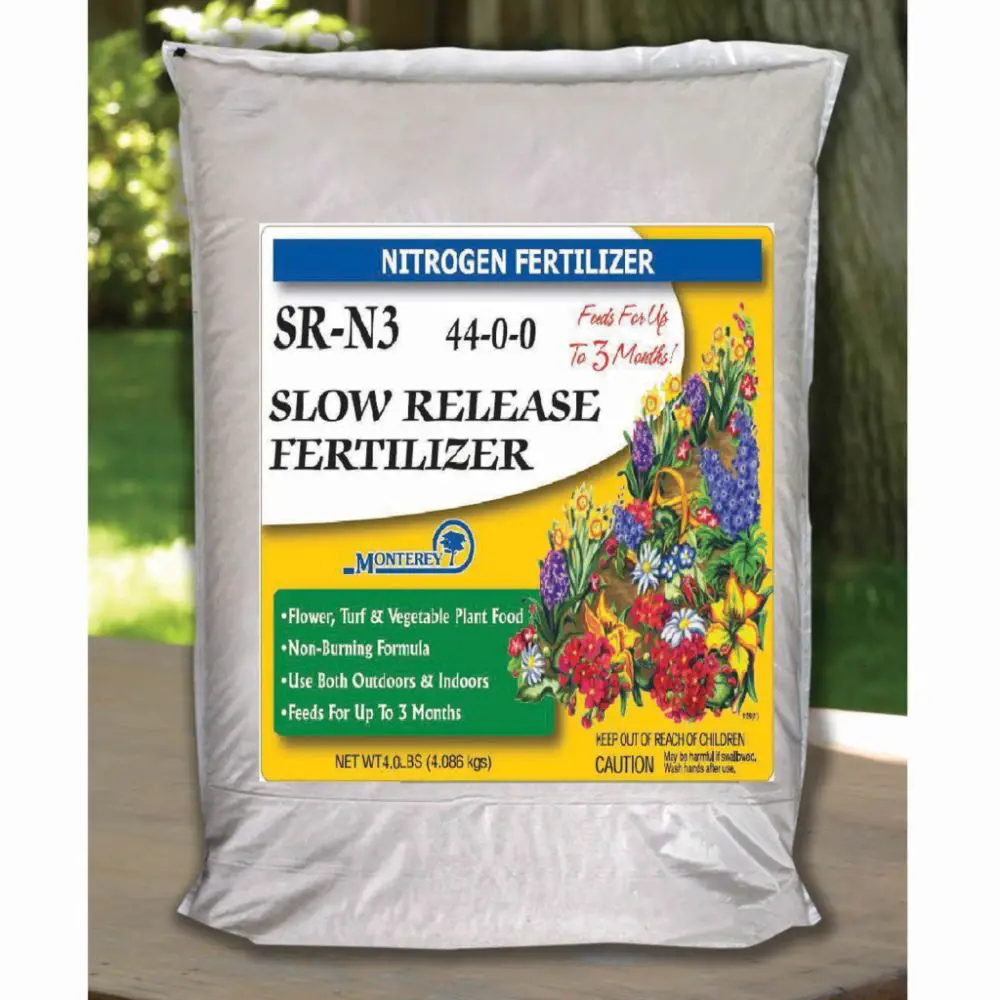
Source Image: www.lovemylawn.net
Slow-Release Fertilizer Applications
Mulching for Nutrient Retention
Mulching serves as a multifaceted tool in low-maintenance gardening, offering benefits beyond weed suppression and moisture conservation. By selecting appropriate mulch materials and applying them strategically, gardeners can enhance nutrient retention in the soil, minimize nutrient leaching, and create a conducive environment for slow-release fertilizers to nourish plant roots effectively.
8. Mulching for Nutrient Retention
Mulching plays a pivotal role in nutrient management by conserving soil moisture, moderating temperature extremes, and suppressing weed growth. In addition to these benefits, mulches contribute to nutrient retention in the soil, reducing nutrient leaching and optimizing the efficacy of slow-release fertilizers. Let’s explore the diverse array of mulch materials and their impact on nutrient availability in low-maintenance gardening settings.
Table 8: Types of Mulch Materials for Nutrient Retention
| Mulch Material | Description |
|---|---|
| Organic Mulches | Compost, shredded leaves, straw, grass clippings |
| Inorganic Mulches | Gravel, stones, landscape fabric |
| Living Mulches | Cover crops, groundcover plants |
8.1 Benefits of Mulching in Low-Maintenance Gardening
Mulching confers numerous benefits beyond weed suppression and moisture conservation, including enhanced nutrient retention in the soil. By forming a protective layer over the soil surface, mulches minimize nutrient leaching caused by rainfall or irrigation, allowing slow-release fertilizers to remain accessible to plant roots for an extended period. Additionally, mulches promote soil microbial activity, facilitating nutrient cycling and organic matter decomposition, further enriching the soil with essential nutrients.
8.2 Types of Mulch Materials Suitable for Retaining Slow-release Fertilizers
Selecting the appropriate mulch material is essential for maximizing nutrient retention and fostering healthy plant growth in low-maintenance gardens. Organic mulches, such as compost, shredded leaves, and grass clippings, gradually break down over time, releasing nutrients into the soil and augmenting slow-release fertilizer efficacy. Inorganic mulches, such as gravel or landscape fabric, provide long-lasting weed suppression and moisture conservation benefits without contributing to soil nutrient levels. Living mulches, including cover crops and groundcover plants, offer dynamic nutrient cycling capabilities, enriching the soil with organic matter and fostering a resilient ecosystem.
8.3 Applying Mulch to Conserve Soil Moisture and Enhance Nutrient Availability
Strategic mulch application techniques play a crucial role in optimizing nutrient retention and promoting efficient slow-release fertilizer utilization. Evenly spreading mulch around plant bases or over garden beds creates a protective barrier that minimizes soil moisture evaporation and nutrient leaching. Layering mulch materials to a depth of 2-4 inches ensures adequate coverage while allowing sufficient airflow and water infiltration. Regular replenishment of mulch layers as they decompose maintains nutrient-rich soil conditions and supports long-term plant health and vitality.
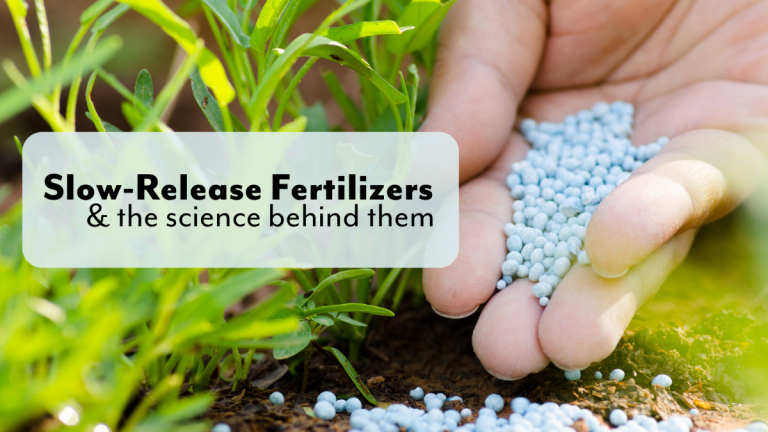
Source Image: salisburygreenhouse.com
Complementary Practices for Nutrient Management
Incorporating complementary nutrient management practices enhances the efficacy of slow-release fertilizers and fosters a holistic approach to soil health and plant nutrition. From cover cropping and companion planting to crop rotation strategies, synergistic techniques contribute to nutrient cycling, pest management, and soil fertility improvement in low-maintenance gardening environments.
9. Complementary Practices for Nutrient Management
Integrating complementary nutrient management practices into low-maintenance gardening regimens promotes soil health, enhances nutrient availability, and fosters resilient plant ecosystems. By harnessing the synergistic benefits of cover cropping, companion planting, and crop rotation, gardeners can optimize nutrient cycling, suppress pests and diseases, and mitigate soil nutrient depletion, reducing reliance on external inputs such as fertilizers.
Table 9: Complementary Practices for Nutrient Management
| Practice | Description |
|---|---|
| Cover Cropping | Planting nitrogen-fixing cover crops to replenish soil nutrients |
| Companion Planting | Pairing compatible plant species to enhance nutrient cycling and pest management |
| Crop Rotation | Rotating crops to prevent soil nutrient depletion and minimize disease pressure |
9.1 Incorporating Cover Crops and Green Manures to Replenish Soil Nutrients
Cover cropping represents a valuable strategy for enriching soil fertility and promoting nutrient cycling in low-maintenance gardens. Nitrogen-fixing cover crops, such as legumes, harness atmospheric nitrogen through symbiotic relationships with soil bacteria, replenishing soil nitrogen levels and reducing the need for synthetic fertilizers. Additionally, cover crops contribute organic matter to the soil upon decomposition, fostering soil structure improvement and enhancing microbial activity. By integrating cover crops into crop rotation cycles or fallow periods, gardeners rejuvenate soil health and sustainably manage nutrient resources.
9.2 Companion Planting for Natural Nutrient Cycling and Pest Management
Companion planting offers a holistic approach to nutrient management and pest control by leveraging symbiotic relationships between plant species. Pairing compatible plants with complementary nutrient requirements and growth habits enhances nutrient uptake efficiency and minimizes soil nutrient depletion. Additionally, certain plant combinations exhibit natural pest-repellent properties or attract beneficial insects, reducing the need for chemical interventions and fostering a balanced garden ecosystem. By strategically designing planting arrangements based on companion planting principles, gardeners optimize nutrient utilization and promote biodiversity in their gardens.
9.3 Integrating Crop Rotation Strategies to Prevent Nutrient Depletion
Crop rotation is a time-honored agricultural practice that offers significant benefits in low-maintenance gardening contexts, including soil nutrient replenishment and disease management. By rotating crops with varying nutrient requirements and growth characteristics, gardeners mitigate soil nutrient depletion while disrupting pest and disease life cycles. Additionally, certain crop rotations, such as legume intercropping or green manure incorporation, contribute organic matter and nitrogen to the soil, enriching soil fertility and promoting long-term sustainability. By implementing strategic crop rotation plans, gardeners maintain soil health, optimize nutrient availability, and achieve sustainable productivity in their gardens.
In the subsequent sections, we will explore strategies for addressing common challenges and pitfalls in nutrient management, evaluating environmental considerations and sustainability practices, and fostering long-term soil health and fertility management in low-maintenance gardening environments.
Addressing Common Challenges and Pitfalls
Navigating nutrient management in low-maintenance gardening presents various challenges, from nutrient deficiencies to over-fertilization risks. By identifying signs of nutrient imbalances, troubleshooting issues related to slow-release fertilizer application, and implementing corrective measures, gardeners can overcome common pitfalls and foster healthy plant growth in their gardens.
10. Addressing Common Challenges and Pitfalls
Effective nutrient management in low-maintenance gardening environments requires vigilant monitoring and proactive intervention to address common challenges and pitfalls. By recognizing signs of nutrient deficiencies or excesses, troubleshooting fertilizer-related issues, and implementing corrective measures, gardeners can optimize nutrient utilization, promote balanced plant growth, and mitigate potential setbacks.
Table 10: Signs of Nutrient Deficiency and Excess in Plants
| Nutrient | Deficiency Symptoms | Excess Symptoms |
|---|---|---|
| Nitrogen | Stunted growth, yellowing leaves | Lush foliage, delayed flowering, reduced fruit set |
| Phosphorus | Purple or bronze leaf discoloration, poor root growth | Dark green leaves, reduced root development |
| Potassium | Yellowing leaf margins, weak stems | Leaf scorch, reduced fruit quality, increased susceptibility to pests and diseases |
| Calcium | Blossom end rot in fruits, stunted root growth | Leaf tip burn, reduced fruit set, distorted growth |
| Magnesium | Interveinal chlorosis, leaf curling | Reduced fruit quality, leaf drop, magnesium toxicity symptoms |
10.1 Identifying Signs of Nutrient Deficiency and Excess in Plants
Detecting and interpreting visual cues of nutrient deficiencies or excesses is essential for diagnosing underlying nutrient management issues and implementing targeted corrective measures. Common symptoms of nutrient deficiencies include stunted growth, leaf discoloration, and poor fruit development, indicative of inadequate nutrient availability. Conversely, signs of nutrient excesses may manifest as lush foliage, leaf scorch, or reduced fruit quality, signaling imbalances in nutrient uptake or application rates. By closely monitoring plant health and foliage appearance, gardeners can promptly address nutrient-related challenges and restore optimal growing conditions.
10.2 Troubleshooting Issues Related to Slow-release Fertilizer Application
Despite their numerous benefits, slow-release fertilizers may pose challenges related to application efficiency, nutrient release rates, and compatibility with specific plant species. Gardeners may encounter issues such as uneven nutrient distribution, prolonged nutrient release, or nutrient imbalances resulting from over-reliance on slow-release formulations. By assessing fertilizer performance, adjusting application techniques, and incorporating supplemental fertilization as needed, gardeners can mitigate potential drawbacks and optimize the effectiveness of slow-release fertilizers in supporting healthy plant growth.
10.3 Strategies for Correcting Nutrient Imbalances Without Over-reliance on Fertilizers
Maintaining balanced soil fertility and addressing nutrient imbalances require a holistic approach that extends beyond fertilizer applications alone. Incorporating soil amendments, such as lime or sulfur, to adjust soil pH levels can enhance nutrient availability and promote optimal nutrient uptake by plants. Additionally, organic practices, including composting and cover cropping, replenish soil organic matter, foster beneficial microbial activity, and improve nutrient cycling, reducing the reliance on synthetic fertilizers. By integrating diverse nutrient management strategies tailored to specific gardening contexts, gardeners can cultivate resilient plant ecosystems and minimize the risk of nutrient imbalances over time.
Environmental Considerations and Sustainability
Evaluating the environmental impact of nutrient management practices and adopting sustainable gardening approaches are integral to promoting long-term ecological health and resilience. By choosing eco-friendly fertilizer options, implementing soil conservation practices, and minimizing reliance on external inputs, gardeners can contribute to a more sustainable and regenerative gardening paradigm.
11. Environmental Considerations and Sustainability
Balancing nutrient management goals with environmental stewardship principles is crucial for fostering sustainable gardening practices and preserving ecosystem integrity. By evaluating the environmental impact of nutrient management practices, prioritizing resource conservation, and embracing sustainable gardening techniques, gardeners can minimize their ecological footprint and promote the long-term health and resilience of garden ecosystems.
Table 11: Environmental Considerations in Nutrient Management
| Consideration | Description |
|---|---|
| Eco-friendly Fertilizers | Choosing fertilizers with low environmental impact |
| Soil Conservation | Implementing erosion control measures, such as mulching and terracing |
| Minimizing External Inputs | Reducing reliance on synthetic fertilizers and chemical pesticides |

